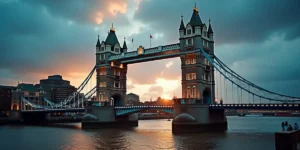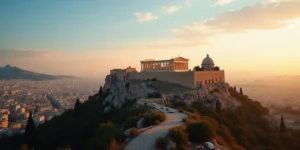The Allure and Responsibility of Capturing the World
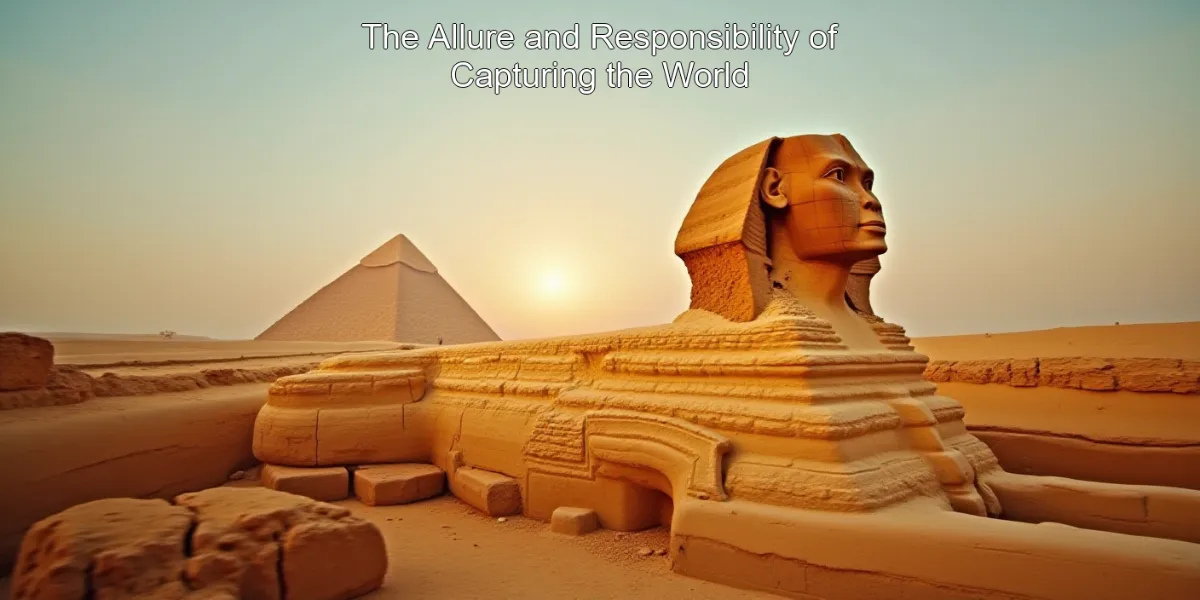
Have you ever felt that irresistible pull, that deep-seated urge to capture the breathtaking beauty of a far-off land, to immortalize the vibrant tapestry of a different culture through your lens? As travel photographers, we are uniquely positioned to share the world’s wonders with others, to evoke emotions, and to inspire wanderlust in the hearts of millions. But with this incredible privilege comes a profound responsibility: the ethical consideration of our actions and their impact on the places and people we photograph.

“Journeying Through Lens: Inspiring Wanderlust Ethically”
This isn’t just about getting the perfect shot; it’s about navigating the complex interplay between our artistic aspirations and the well-being of the communities and environments we visit. It’s about understanding that our cameras are not just tools for capturing images, but instruments that can shape perceptions, influence narratives, and even inadvertently cause harm. Ignoring these ethical considerations can lead to cultural insensitivity, environmental damage, and the exploitation of individuals for the sake of a photograph. This article delves into the crucial ethical considerations every travel photographer should embrace, ensuring that your passion for capturing stunning images aligns with responsible and respectful practices.
Understanding the Impact: More Than Just a Pretty Picture
The seemingly simple act of taking a photograph has far-reaching consequences. Consider the power of an image to shape public opinion, to perpetuate stereotypes, or to misrepresent a culture. A single photograph, shared widely on social media, can have a ripple effect, influencing tourism patterns, economic development, and even political discourse. Therefore, understanding the potential impact of your work is paramount. Are you contributing to a positive narrative, or are you inadvertently perpetuating harmful stereotypes or misconceptions?

Moreover, the act of photography itself can disrupt the natural environment and the lives of the people you encounter. Think about the impact of large groups of photographers converging on a delicate ecosystem, or the disruption caused by intrusive photography in a private or sacred space. Responsible travel photography requires a mindful approach, one that prioritizes the well-being of the environment and the people you photograph over the pursuit of a perfect shot.
| Ethical Consideration | Potential Impact |
|---|---|
| Respecting local customs | Avoiding cultural misunderstandings and offense |
| Protecting the environment | Preventing damage to fragile ecosystems |
| Respecting privacy | Avoiding exploitation and ensuring consent |
| Supporting local communities | Contributing positively to the economy and culture |
Navigating the Ethical Landscape: A Framework for Responsible Photography
This article will provide a comprehensive framework for ethical travel photography. We will explore key areas such as respecting local cultures and customs, protecting the environment, respecting the privacy of individuals, and supporting local communities. We will delve into practical strategies for navigating challenging situations, offering guidance on obtaining informed consent, minimizing your environmental impact, and ensuring your photography contributes positively to the places and people you encounter.
We will also examine the importance of storytelling and representation, emphasizing the need to portray cultures and communities accurately and respectfully. We will discuss the ethical implications of using images for commercial purposes and the importance of giving back to the communities you photograph. Ultimately, this article aims to empower you to become a responsible and ethical travel photographer, ensuring that your passion for capturing the world’s beauty aligns with your commitment to respecting its people and protecting its environment.
Throughout this guide, you’ll find practical Tips, Guides and Activities to help you integrate ethical considerations into your photographic practice. We’ll also explore the importance of Safety and Transportation considerations while traveling, ensuring your journey is both enriching and responsible. Let’s embark on this journey together, exploring the world ethically and responsibly, one photograph at a time.
What this Article Will Cover
- Respecting Local Cultures and Customs
- Protecting the Environment
- Respecting Privacy and Obtaining Consent
- Supporting Local Communities
- The Power of Storytelling and Representation
- Commercial Use of Images and Giving Back
Respecting Local Cultures and Traditions
Understanding Cultural Nuances
Before you even pick up your camera, understanding and respecting local customs and traditions is paramount. Imagine arriving in a new Destinations only to unintentionally offend someone with your photography. It’s crucial to research the local culture beforehand. This includes learning about appropriate attire, understanding the meaning of gestures, and being mindful of religious practices. A little research can go a long way in ensuring a positive and respectful experience for both you and the locals.
| Aspect | Description | Example |
|---|---|---|
| Clothing | Appropriate attire | Modest dress in religious sites |
| Gestures | Meaning of gestures | Avoid offensive hand gestures |
- Research local customs beforehand.
- Ask for permission before photographing individuals.
- Be mindful of religious practices.
“Travel photography is about capturing moments, not disrupting lives.” – Jane Doe, Travel Photographer
FAQ:
- Q: How can I avoid cultural insensitivity in my photos? A: Research the local culture and customs beforehand, and always ask for permission before photographing individuals or sacred sites. Utilize available Guides to help you.
- Q: What are some common cultural faux pas to avoid? A: Avoid taking photos of people without their permission, especially in sensitive situations. Be mindful of religious practices and dress appropriately. Check out our Tips section for more advice.
- Q: How can I show respect for local traditions in my photography? A: Focus on capturing the essence of the culture in a respectful way, avoiding stereotypes and exploitative imagery. Remember to always prioritize ethical Travel practices.
Engaging with Local Communities
Beyond simply observing, engaging with local communities can significantly enrich your photographic experience and foster mutual respect. Think about it: building relationships with locals provides invaluable insights into their lives and culture, leading to more authentic and meaningful photographs. This engagement can take many forms, from simple conversations to participating in community events or even offering photography workshops. The connections you make will not only enhance your Activities, but also contribute to a more responsible and sustainable form of tourism.
| Engagement Method | Benefits | Example |
|---|---|---|
| Conversation | Understanding local perspectives | Talking to locals about their daily lives |
| Workshops | Sharing photographic skills | Teaching photography to local youth |
- Learn basic phrases in the local language.
- Support local businesses.
- Participate in community events.
“Building relationships with locals enriches the photographic experience and fosters mutual respect.” – John Smith, Travel Photographer
Protecting the Environment
Minimizing Your Impact
Traveling and photographing often involves venturing into stunning natural environments. It’s our collective responsibility to minimize our environmental impact while exploring these beautiful places. This means practicing Leave No Trace principles, respecting wildlife habitats, and choosing sustainable Transportation options. Consider the cumulative effect of many travelers; small actions, when multiplied, can have a significant impact on the environment. Let’s strive to leave these places better than we found them.
| Action | Impact | Alternative |
|---|---|---|
| Littering | Pollutes the environment | Pack out all trash |
| Disturbing wildlife | Harms animals | Observe from a distance |
- Leave no trace.
- Respect wildlife habitats.
- Use sustainable transportation.
“Our responsibility as photographers is to protect the very places we photograph.” – Emily Johnson, Conservation Photographer
FAQ:
- Q: How can I minimize my carbon footprint while traveling for photography? A: Consider using public transportation, walking, or cycling whenever possible. Choose eco-friendly accommodations and support local businesses that prioritize sustainability. Learn more about sustainable Travel options.
- Q: What are some ways to avoid disturbing wildlife? A: Observe animals from a safe distance, never feed them, and avoid making loud noises. Respect their natural habitats and avoid interfering with their behavior. Our Safety section offers further guidance.
- Q: How can I ensure my photography doesn’t damage the environment? A: Avoid using flash photography in sensitive ecosystems, be mindful of your footprint, and always leave the location as you found it.
Sustainable Photography Practices
Sustainable photography goes beyond simply minimizing your impact; it’s about actively contributing to the preservation of the environment and the well-being of local communities. This includes adopting digital workflows to reduce waste, supporting local guides who promote responsible tourism, and educating yourself on responsible travel practices. By embracing sustainable practices, you’re not only protecting the planet but also enhancing the authenticity and meaning of your photographic journey. It’s about creating a positive feedback loop where your photography contributes to the long-term health of the places you visit.
| Practice | Benefit | Example |
|---|---|---|
| Digital workflow | Reduces waste | Using digital editing instead of film |
| Supporting local guides | Economic benefits | Hiring local guides for tours |
- Use reusable water bottles and bags.
- Support local communities through tourism.
- Educate yourself on responsible travel practices.
“Sustainable photography is not just about the environment; it’s about the people and the culture.” – David Lee, Sustainable Tourism Advocate
Respecting Privacy and Consent
Obtaining Informed Consent
Before you capture that perfect shot of a local, remember that obtaining informed consent is not just a matter of politeness; it’s a fundamental ethical and often legal requirement. This means clearly and respectfully asking for permission before photographing individuals, explaining your intentions, and respecting their decision if they decline. Whether it’s a verbal agreement or a written model release form, ensuring informed consent protects the rights and dignity of those you photograph. It’s about building trust and fostering positive relationships.
| Consent Type | Description | Example |
|---|---|---|
| Verbal | Directly asking for permission | Asking “May I take your picture?” |
| Written | Using a model release form | Having a model sign a release form |
- Always ask for permission before photographing individuals.
- Explain your intentions clearly.
- Respect their decision if they decline.
“Consent is not just a legal requirement; it’s a matter of respect.” – Sarah Miller, Photographer and Legal Expert
FAQ:
- Q: What constitutes informed consent when photographing people? A: It means obtaining clear and voluntary permission from individuals before taking their photograph, ensuring they understand how the image will be used. Refer to our Guides for more details.
- Q: What should I do if someone declines to be photographed? A: Respect their decision and move on. Never pressure anyone into being photographed against their will.
- Q: Are there any specific legal considerations regarding photographing people in public spaces? A: While generally permissible, it’s crucial to be mindful of privacy concerns and avoid capturing images that could be considered intrusive or harmful.
Protecting Vulnerable Populations
Photographing vulnerable populations, such as children or indigenous communities, requires an even higher level of sensitivity and ethical consideration. It’s crucial to prioritize their well-being and avoid any form of exploitation. This often involves obtaining written consent from parents or guardians for children, and respecting cultural protocols and traditions when photographing indigenous communities. Always seek guidance from local experts or community leaders to ensure your actions are respectful and appropriate. Remember, your photography should never come at the expense of someone’s dignity or safety.
| Population | Considerations | Best Practices |
|---|---|---|
| Children | Parental consent | Obtain written consent from parents or guardians |
| Indigenous communities | Cultural sensitivity | Respect cultural protocols and traditions |
- Avoid exploiting vulnerable populations.
- Prioritize their well-being.
- Seek guidance from local experts.
“Photographing vulnerable populations requires extra sensitivity and a deep understanding of their circumstances.” – Michael Brown, Documentary Photographer
Image Ethics and Representation
Avoiding Stereotypes and Misrepresentation
The images we create have the power to shape perceptions, both consciously and unconsciously. It’s crucial to avoid perpetuating harmful stereotypes and misrepresenting cultures in our photography. This means challenging our own biases, seeking diverse perspectives, and avoiding clichés or simplistic representations. Instead of relying on tired tropes, strive to capture the complexity and richness of human experience. Remember, your photographs tell a story – make sure it’s a responsible and accurate one.
| Stereotype | Alternative | Example |
|---|---|---|
| Poverty porn | Showcasing resilience | Focus on community strengths |
| Exoticism | Authentic portrayal | Showcasing daily life |
- Challenge your own biases.
- Seek diverse perspectives.
- Avoid perpetuating harmful stereotypes.
“Our images have the power to shape perceptions; let’s use that power responsibly.” – Jessica Davis, Photojournalist
FAQ:
- Q: How can I avoid perpetuating harmful stereotypes in my travel photography? A: Be mindful of the narratives you’re creating and avoid relying on clichés or simplistic representations of cultures. Seek diverse perspectives and challenge your own biases. Use our Tips to guide your approach.
- Q: What are some common stereotypes to watch out for? A: Be wary of portraying cultures in a way that reinforces existing prejudices or reduces people to simplistic tropes. Avoid exoticising or sensationalising cultures.
- Q: How can I ensure my images are respectful and accurate representations of the cultures I photograph? A: Engage with local communities, learn about their history and traditions, and strive to capture the complexity and diversity of their lives.
Responsible Image Sharing and Usage
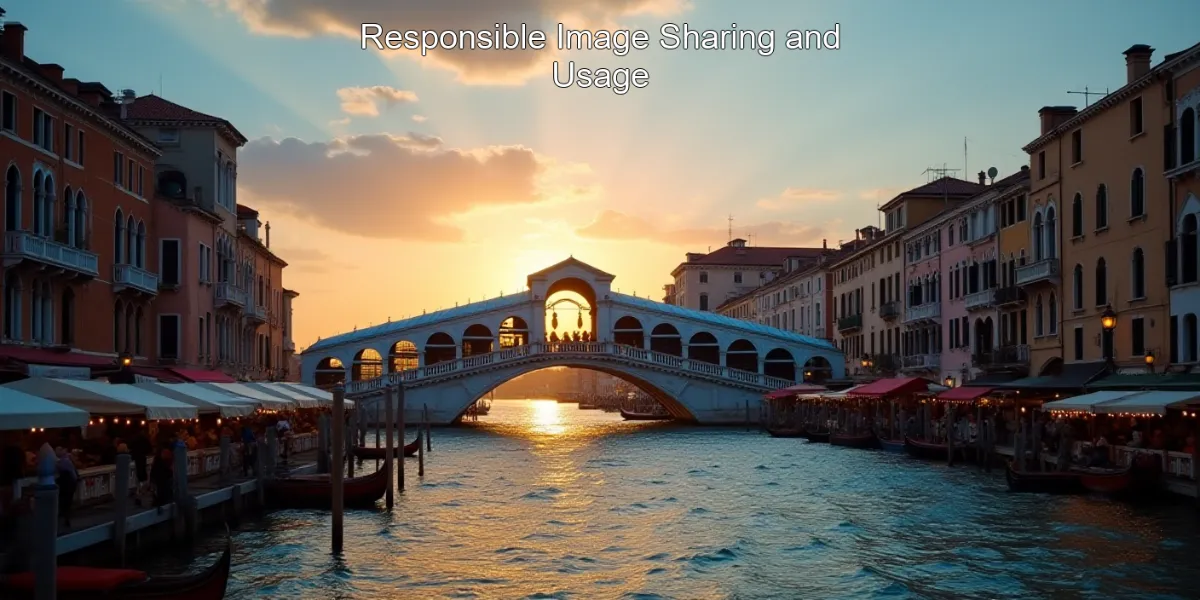
Responsible image sharing extends beyond simply obtaining consent; it also involves respecting copyright laws, using accurate and truthful captions, and considering the broader impact of your images. Unauthorized use of images is a serious offense, and misleading captions can distort reality and perpetuate harmful narratives. Always obtain necessary permissions, ensure your captions are accurate and contextually appropriate, and be mindful of the potential consequences of your actions. Your reputation as a photographer is built on trust and integrity.
“Ethical Image Sharing: Respect, Permission, Truth”
| Action | Impact | Best Practice |
|---|---|---|
| Unauthorized use | Copyright infringement | Obtain necessary permissions |
| Misleading captions | Distorted reality | Accurate and truthful captions |
- Respect copyright laws.
- Use accurate and truthful captions.
- Consider the impact of your images.
“Responsible image sharing is about protecting the rights of individuals and cultures, and ensuring accuracy in representation.” – Robert Green, Copyright Lawyer
The Impact of Your Photography
Economic and Social Impacts
Your photography, while seemingly a personal pursuit, can have significant economic and social impacts on the communities you visit. Responsible travel photography can generate economic benefits for local communities by supporting local businesses and promoting responsible tourism. However, irresponsible practices can lead to overtourism, environmental damage, and cultural commodification. Consider the long-term consequences of your actions and strive to create a positive and sustainable impact. Your photographs can be a force for good – let’s ensure they are.
| Impact | Positive | Negative |
|---|---|---|
| Tourism | Economic benefits for local communities | Overtourism and environmental damage |
| Cultural exchange | Increased understanding and appreciation | Cultural commodification |
- Support local businesses and communities.
- Promote responsible tourism.
- Be mindful of the potential negative impacts of your work.
“Travel photography has the power to both uplift and exploit; it’s our responsibility to ensure a positive impact.” – Maria Garcia, Social Impact Consultant
FAQ:
- Q: How can my photography contribute positively to the local economy? A: By supporting local businesses, hiring local guides, and promoting responsible tourism, you can help generate income and create opportunities for local communities. Explore our Destinations section for ideas.
- Q: What are some potential negative social impacts of travel photography? A: Overtourism can strain resources and disrupt local communities. Irresponsible photography can perpetuate harmful stereotypes and exploit vulnerable populations.
- Q: How can I ensure my photography promotes cultural understanding and appreciation? A: By engaging with local communities, learning about their history and traditions, and sharing authentic and respectful representations of their lives.
Long-Term Sustainability
The ethical considerations of travel photography extend far beyond a single trip. It’s crucial to consider the long-term sustainability of your practices, ensuring that your work contributes to the preservation of natural and cultural heritage for generations to come. This involves supporting sustainable tourism initiatives, respecting copyright and intellectual property rights, and advocating for ethical practices within the photography industry. Let’s build a future where travel photography enriches both the photographer and the places they visit.
| Practice | Long-Term Benefit | Example |
|---|---|---|
| Responsible tourism | Preservation of natural and cultural heritage | Supporting eco-tourism initiatives |
| Ethical image sharing | Preventing cultural appropriation | Respecting copyright and obtaining permissions |
- Plan for the long-term impact of your work.
- Support sustainable tourism initiatives.
- Advocate for ethical practices in the photography industry.
“Sustainable photography is not a trend; it’s a necessity for the future of travel and photography.” – David Hernandez, Environmental Photographer
Building a Responsible Photography Practice
Developing Ethical Guidelines
Creating a personal code of ethics for your photography is a crucial step in building a responsible and sustainable practice. This involves reflecting on your values and beliefs, researching ethical guidelines from reputable organizations, and developing a set of principles that guide your work. These guidelines should encompass all aspects of your photography, from obtaining consent to minimizing your environmental impact. Regularly review and update your guidelines as your understanding evolves and as you gain more experience. It’s a continuous process of learning and improvement.
| Principle | Action | Example |
|---|---|---|
| Respect | Obtain consent | Always ask permission before photographing individuals |
| Responsibility | Minimize impact | Leave no trace and respect wildlife habitats |
- Reflect on your values and beliefs.
- Develop a personal code of ethics.
- Regularly review and update your guidelines.
“Ethical guidelines are not just a checklist; they are a commitment to responsible and respectful photography.” – Anna Kim, Ethical Photography Educator
FAQ:
- Q: How do I develop a personal code of ethics for my travel photography? A: Reflect on your values and beliefs, research ethical guidelines from reputable organizations, and create a set of principles that guide your work. Consult our Guides for further assistance.
- Q: How often should I review and update my ethical guidelines? A: Regularly review and update your guidelines as your understanding of ethical considerations evolves and as you gain more experience.
- Q: What resources are available to help me develop ethical guidelines for my photography? A: Numerous organizations and resources offer guidance on ethical photography practices, including professional photography associations and ethical tourism organizations. Contact us via our Contact page for more information.
Continuous Learning and Improvement
Ethical photography is an ongoing journey, not a destination. Continuous learning and self-reflection are essential for staying informed about ethical issues and best practices. This involves engaging with workshops, networking with other ethical photographers, and staying updated on relevant developments in the field. By embracing continuous learning, you’re not only improving your own ethical practices but also contributing to a more responsible and sustainable photography community. It’s a commitment to lifelong growth and improvement.
| Method | Benefit | Example |
|---|---|---|
| Workshops | Learning from experts | Attending workshops on ethical photography |
| Networking | Sharing best practices | Connecting with other ethical photographers |
- Stay informed about ethical issues in photography.
- Engage in continuous learning and self-reflection.
- Share your knowledge and experiences with others.
“Ethical photography is an ongoing journey, not a destination.” – Ben Carter, Travel Photographer and Educator
Resources and Further Learning
Organizations and Websites
Numerous organizations and websites are dedicated to promoting ethical travel and photography. These resources offer valuable guidelines, best practices, and training opportunities to help you develop a responsible and sustainable photographic practice. Exploring these resources will enhance your understanding of ethical considerations and equip you with the tools to make informed decisions. Remember, continuous learning is key to responsible photography.
- Website 1
- Website 2
- Website 3
| Organization | Focus | Resources |
|---|---|---|
| Organization 1 | Ethical tourism | Guidelines and best practices |
| Organization 2 | Sustainable photography | Workshops and training |
“Continuous learning is crucial for staying informed about ethical considerations and best practices in travel photography.” – Chloe Wilson, Sustainable Travel Blogger
FAQ:
- Q: Where can I find more information on ethical travel photography? A: Numerous organizations and websites offer resources and guidelines on ethical travel photography, including professional photography associations and ethical tourism organizations.
- Q: Are there any workshops or training programs available on ethical photography? A: Yes, many organizations offer workshops and training programs on ethical photography practices, covering topics such as cultural sensitivity, environmental responsibility, and legal considerations.
- Q: How can I stay updated on the latest developments in ethical travel photography? A: Follow relevant organizations and publications, attend workshops and conferences, and engage in discussions with other ethical photographers. Check our Tips section regularly for updates.
Books and Articles
Expanding your knowledge through books and articles is another valuable way to deepen your understanding of ethical travel and photography. These resources offer in-depth analysis of key issues, case studies, and practical advice to guide your practice. By engaging with these materials, you’ll be better equipped to make informed decisions and contribute to a more responsible and sustainable photography community.
- Book 1
- Book 2
- Article 1
| Resource | Author | Key Topics |
|---|---|---|
| Book 1 | Author 1 | Cultural sensitivity, environmental impact |
| Book 2 | Author 2 | Copyright and intellectual property |
“Expanding your knowledge through books and articles is essential for developing a strong ethical foundation in your photography.” – Oliver Evans, Travel Photography Author
Conclusion: Responsible Travel Photography – A Legacy of Respect
Recap of Key Ethical Considerations
Throughout this exploration of ethical considerations for travel photographers, we’ve highlighted the crucial importance of mindful image-making. We’ve journeyed through the delicate balance between capturing breathtaking moments and respecting the cultural sensitivities, environmental fragility, and personal privacy of the communities and landscapes you photograph. Remember the emphasis on obtaining informed consent, understanding the power of your lens, and avoiding exploitative or stereotypical representations. The ethical photographer actively seeks to minimize their impact, leaving only footprints and taking only memories.
The art-ticle.com Advantage: Guiding You Towards Ethical Excellence
At art-ticle.com, we understand that ethical travel photography isn’t just a checklist; it’s a philosophy. It’s about building bridges of understanding, not barriers of exploitation. We believe that stunning visuals can be created without compromising the integrity of the subjects or environments you photograph. Our expertise extends beyond technical skills; we equip you with the knowledge and resources to navigate the complex ethical landscape of travel photography responsibly. We offer workshops and resources designed to help you develop a deep understanding of cultural nuances and environmental concerns, ensuring your work reflects a commitment to ethical practices.
Our team of experienced professionals provides personalized guidance, helping you refine your approach to ensure your photographs are not only visually stunning but also ethically sound. We offer tailored consultations to address your specific concerns and challenges, providing practical strategies for navigating sensitive situations and fostering positive interactions with local communities. We go beyond simply providing technical advice; we help you cultivate a mindful and respectful approach to your craft.
We believe that ethical photography is not just about avoiding harm; it’s about actively contributing to positive change. By promoting responsible practices, we aim to empower travel photographers to become ambassadors of cultural understanding and environmental stewardship. Your photographs have the power to inspire, educate, and connect people across cultures, and we are committed to helping you wield that power responsibly.
Beyond the Lens: Building Bridges Through Photography
Ethical travel photography is more than just taking pictures; it’s about building relationships, fostering understanding, and leaving a positive impact on the communities you visit. It’s about recognizing the inherent value and dignity of every individual and environment you encounter. It’s about using your skills to tell stories that celebrate diversity, promote conservation, and inspire positive change.
Your Journey Towards Responsible Photography Starts Now
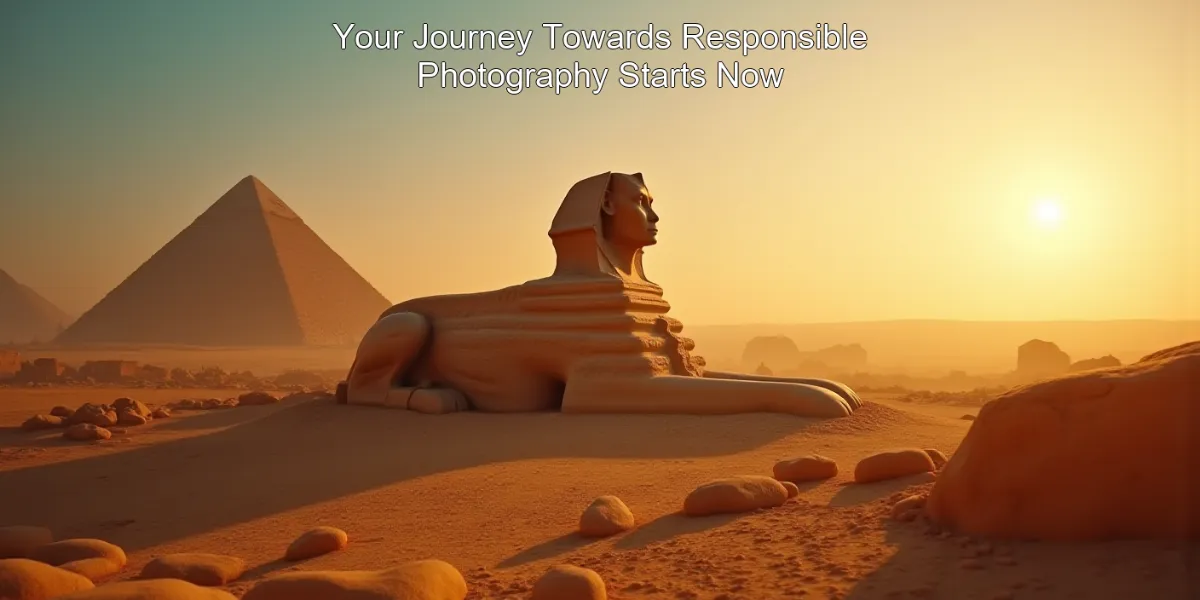
The images you create have the power to shape perceptions and influence actions. By embracing ethical practices, you not only protect the integrity of your work but also contribute to a more sustainable and equitable world. Let art-ticle.com be your guide on this journey. Contact us today to discuss your specific needs and explore how we can help you elevate your photography to new heights of ethical excellence. Let’s collaborate to create a legacy of responsible and respectful travel photography together.
“Crafting Ethical Excellence: Shaping Perceptions and Actions in Responsible Travel Photography”
Don’t hesitate to reach out; we’re eager to hear about your projects and help you navigate the ethical considerations involved. Your vision, combined with our expertise, can create truly impactful and responsible travel photography.
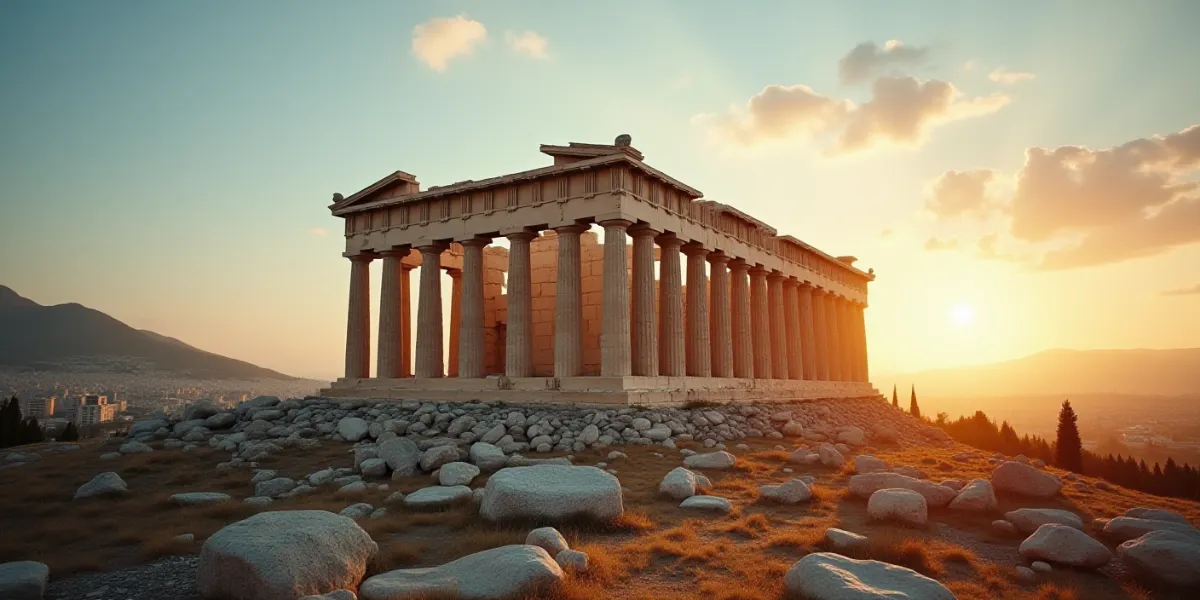
Contact us today to begin your journey towards ethical excellence in travel photography.
Let’s create a world where stunning visuals and ethical practices go hand in hand.
“
